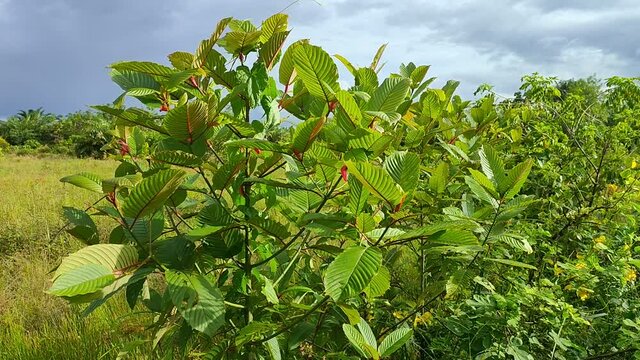
What Does A Kratom Tree Look Like?
Kratom is mostly sold as ground leaf powder outside of its native Southeast Asia. Have you ever wondered what kratom leaves and trees look like?
Here are some key characteristics of kratom trees:
Size: Kratom trees can reach heights of up to 80 feet (about 24 meters) tall in their native habitats, although they are often smaller when cultivated.
Branches and Trunk: Kratom trees have sturdy, branching trunks that support their large canopy of leaves. The branches spread out widely, creating a dense and bushy appearance.
Flowers: Kratom trees produce small, yellowish flowers in clusters. However, these flowers are not very conspicuous, and kratom is primarily grown and valued for its leaves rather than its flowers.
Fruit: Like many trees in the Rubiaceae family, kratom trees produce small, round fruits that contain seeds. However, these fruits are not commonly used or consumed, and kratom propagation is usually done through cuttings or seeds.
Overall, kratom trees have a lush and tropical appearance, with their large, dark green leaves and wide-spreading branches contributing to their distinctive look.

A kratom leaf is typically dark green in color and has a glossy surface. It is oval-shaped with pointed ends and can vary in size, ranging from 4 to 8 inches in length. The veins on the leaf can be either red, green, or white, depending on the maturity of the leaf.














Comments
Leave your comment